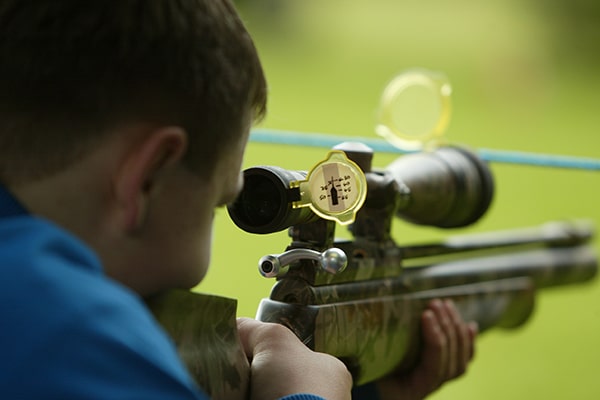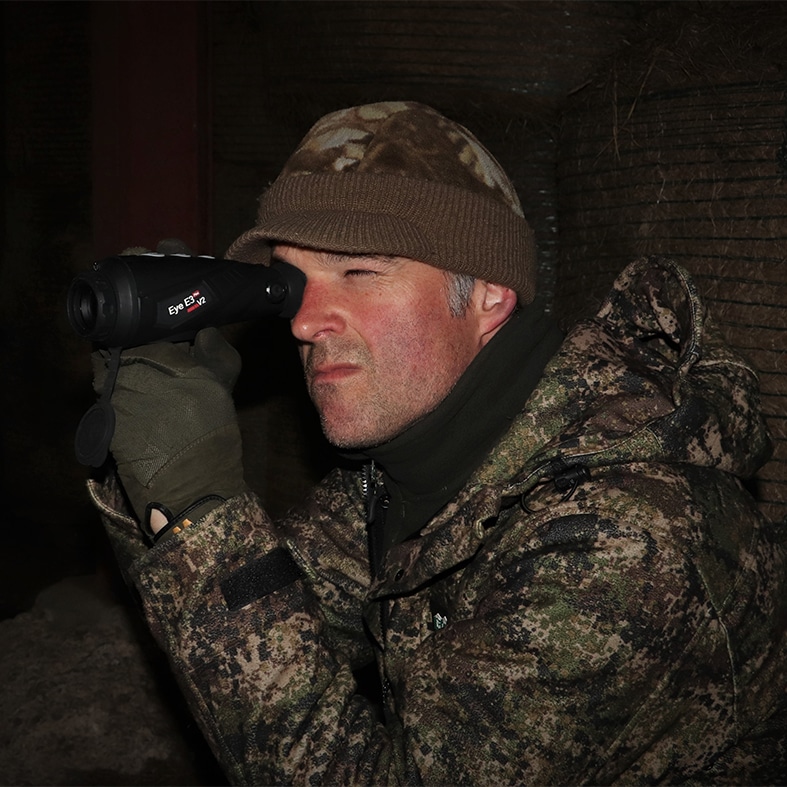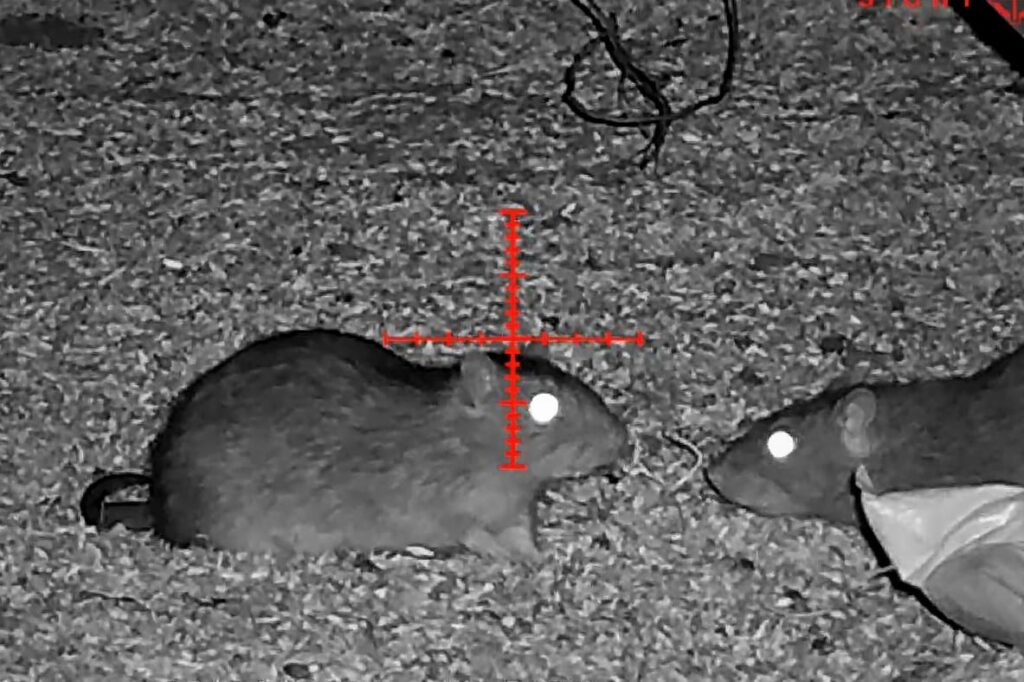
BASC launches campaign against age restrictions for airgun use
Campaign against airgun restrictions launched by BASC as Home Office push forward with firearms safety consultation.
Get information on the legal shooting season for mammals and birds in the UK.
Learn about our current conservation projects and how you can get involved.
Comprehensive information and advice from our specialist firearms team.
Everything you need to know about shotgun, rifle and airgun ammunition.
Find our up-to-date information, advice and links to government resources.
Everything you need to know on firearms law and licensing.
All the latest news and advice on general licences and how they affect you.


Mat Manning explains how airgun shooters can use NV optics to boost their nocturnal pest control, and flags up some of the perils and pitfalls.
Advances in technology and production processes, combined with a huge increase in demand, is making this hi-tech equipment increasingly affordable. Kit that was unthinkably expensive not so long ago is now within the reach of serious airgun shooters who want to join the night vision revolution.
While night vision optics can bring many advantages, it is worth remembering that traditional lamping tactics still work as well as ever. For airgun shooters who want simplicity or can’t justify significant financial outlay, a scope-mounted flashlight will do the job if you want to thin out farmyard rats or bag bunnies out in the fields.
For those who do want to take the next step, the big gain with night vision is the stealth it provides. Without the shine of conventional illumination alerting your quarry to your presence, it is possible to carry out pest control far more effectively. On farms where I used to account for around a dozen rats in a three-hour session with lamping kit, I now often make bags in excess of 30 in the same time. It is not because there are more rats around (there are actually far fewer on most of my permissions), it is simply because the rodents are oblivious to the fact that there’s a shooter lurking in the gloom.
So, what’s out there and what can it do to improve your results when tackling nocturnal pests? Let’s take a look at some of the key night vision kit that airgun shooters are using to boost their success.
The most affordable, and arguably the most suitable, night vision gear for airgun shooters is a digital infrared unit. Rather than conventional lamplight, these optics see infrared light which is provided by an integral or additional illuminator. It is possible to see a faint glow from these illuminators but it is very subtle and seldom noticed by quarry.
You can pick up a decent infrared gunsight for under £600 and a very good one for around £1,000. Most come with their own mounts and illuminators, but this is worth checking as it could amount to additional outlay. Reputable brands include Sightmark, Pard and ATN.
Detection range (the distance at which a target can clearly be seen and identified) is usually clearly stated for all models, and you can expect it to be somewhere between 100 and 500m. The lower end of that scale is adequate for most airgun applications and, because it is partly dictated by the output of the supplied illuminator, you can boost it by investing in a better illuminator at a later date.
Most digital infrared night vision units also produce a full-colour image by day. Image quality doesn’t rival that of a decent glass optic but these sights are good enough for shooting over typical airgun ranges in daylight.
Size and weight are important factors to consider when choosing a night vision unit, and can vary greatly between different models. Lightweight units such as those from Pard can be very useful if you plan to shoot on the move, whereas heavier models such as the ATN X-Sight are perfectly suitable for ambushing rats from a fixed position on the farm. Heavier models can actually make the gun feel more stable if you’re taking supported shots.
Another key consideration is how high the scope sits above the gun when mounted. A gunsight with high mounts mounted on a bullpup with an elevated rail can end up more than 10cm above the barrel. That gap between the line of sight and the pellet as it leaves the barrel means you will have to use a lot of holdover and holdunder to keep shots on target as the pellet travels downrange. This is particularly noticeable when targeting rats at close quarters, so you need to have a very clear idea of the distance to your target.
Some digital night vision units come equipped with laser rangefinders, which show the precise distance to the target on-screen at the press of a button. This is an extremely useful feature, enabling you to make precise adjustments to aim-off to keep shots dead on target, having first put in a bit of range practice to familiarise yourself with the pellet’s trajectory.

Most infrared gunsights boast variable magnification, a choice of reticle styles and colours, and the ability to record video footage through the scope. Some can connect to other devices via Wi-Fi and some have on-screen dials that show you the horizontal and vertical angle of your gun – a very handy way to avoid accuracy issues associated with cant. Despite their sophistication, most modern infrared night vision units are very easy to use.
Digital gunsights are either powered by a rechargeable onboard source or normal batteries and can run empty quite quickly – especially if you are using the more advanced features.
Check the runtime for the model you are considering buying (which will usually be between two and eight hours) and consider investing in an external power bank that can plug in via USB if you are planning to really burn the midnight oil.
Shooters on a tight budget may want to consider buying an infrared add-on to convert their normal telescopic sight to night vision. These set-ups cost from around £150 up to about £600, depending on the features you want. They are available from most of the previously mentioned brands (NV UK and Nite Vizor are also worth considering) and work very well.
Although they can make your gun feel a little unwieldy, and models with exposed screens can sometimes spook very wary quarry with their shine-back, night vision add-ons have the big advantage of enabling you to use your usual daytime set-up with all the aimpoints you are familiar with.
It may not be cheap but thermal night vision gives you the amazing ability to see your quarry’s heat signature – not just when it’s out in the open but also when it’s partially obscured by undergrowth. And this kit doesn’t just work in the night, so it can also be extremely useful for spotting wary grey squirrels hiding among the treetop foliage.
The likes of Pulsar, InfiRay, Pard and ATN make some excellent thermal riflescopes. Prices start at around £1,000 but expect to spend at least twice that much if you want a unit that produces a properly defined image, otherwise you’ll find yourself aiming at blobs rather than clear targets. Another problem with thermal optics, especially cheaper models, is the fact that it can be very hard to see what is behind your target – not everything in the countryside produces a distinctive heat signature – so it is very important to be familiar with the ground you are shooting over. Thermal sights can also be tricky to zero – owing to the fact that they see heat rather than light – but there are plenty of helpful YouTube tutorials to put you on the right track.
Airgun shooters who splurge on a thermal riflescope will be faced with the same choice of features as those found on infrared units. The same considerations relating to mounting, aim-off and rangefinding also apply. Some thermal sights boast massive detection ranges, sometimes in excess of 1km, making them extremely handy for reconnaissance.
My favourite way to make the most of modern night vision optics for my pest control is to use a relatively affordable infrared sight coupled with a thermal spotter, which you can pick up for less than half the price of a thermal sight. By setting the spotter on very low magnification, I get a really wide field of view to scan for quarry – the insight into what wildlife gets up to in the dark has to be seen to be believed and you’ll spot countless rats and rabbits that you would have missed with a lamp or infrared sight.
Once I’ve clocked a potential target, I swap over to the infrared sight on my airgun, which is set at higher magnification for precise shot placement. Apart from giving me a sharper view of my target, the infrared sight also enables me to see a lot more of what is behind it than a thermal unit would, so I can ensure that the gun is pointing in a safe direction before I squeeze the trigger.
You can find more information on airgunning and pest control on our website. This includes courses, videos and what you need to know to get started.

Campaign against airgun restrictions launched by BASC as Home Office push forward with firearms safety consultation.

Young shot Thomas Bristow raises his significant concern over the government’s proposal to restrict the use of airguns for under-18s.

The Heath and Safety Executive will launch a public consultation on proposed restrictions for lead ammunition in England, Wales and Scotland.
Sign up to our weekly newsletter and get all the latest updates straight to your inbox.
© 2023 British Association for Shooting and Conservation. Registered Office: Marford Mill, Rossett, Wrexham, LL12 0HL – Registered Society No: 28488R. BASC is a trading name of the British Association for Shooting and Conservation Limited which is authorised and regulated by the Financial Conduct Authority (FCA) under firm reference number 311937.
If you have any questions or complaints about your BASC membership insurance cover, please email us. More information about resolving complaints can be found on the FCA website or on the EU ODR platform.
This website uses cookies so that we can provide you with the best user experience possible. Cookie information is stored in your browser and performs functions such as recognising you when you return to our website and helping our team to understand which sections of the website you find most interesting and useful.
Strictly Necessary Cookie should be enabled at all times so that we can save your preferences for cookie settings.
If you disable this cookie, we will not be able to save your preferences. This means that every time you visit this website you will need to enable or disable cookies again.
This website uses Google Analytics to collect anonymous information such as the number of visitors to the site, and the most popular pages.
Keeping this cookie enabled helps us to improve our website.
Please enable Strictly Necessary Cookies first so that we can save your preferences!
More information about our Cookie Policy